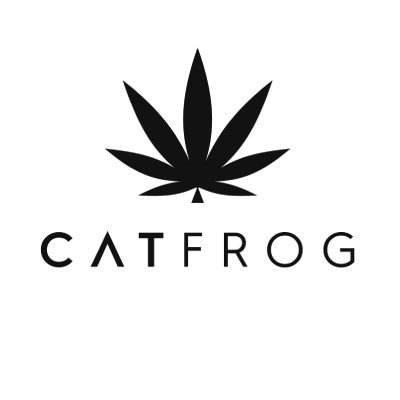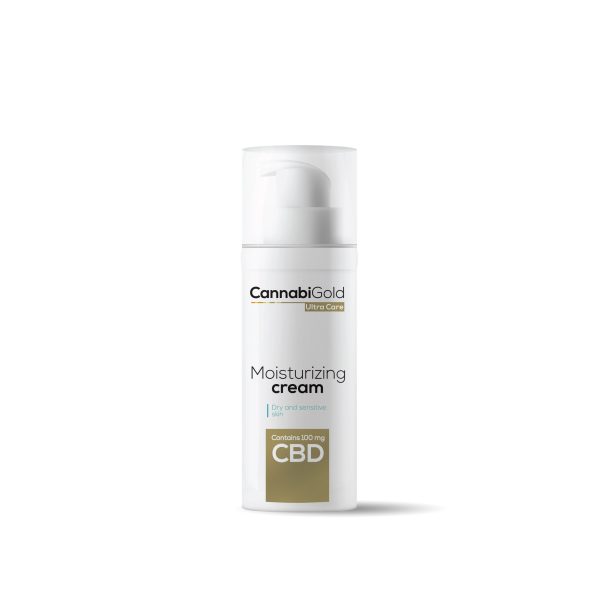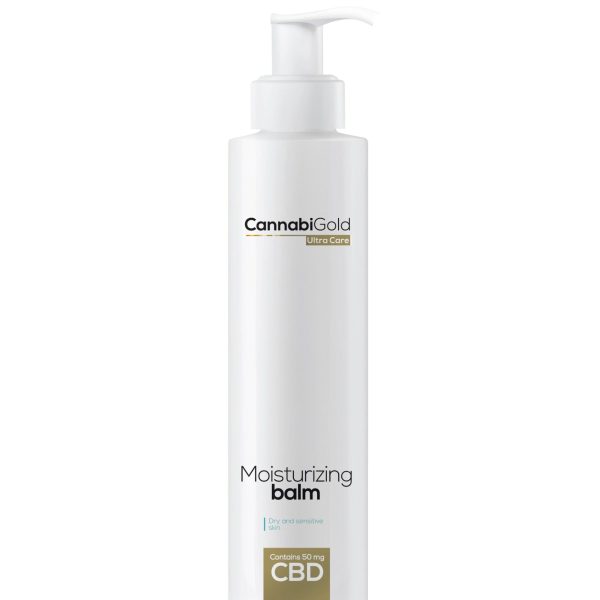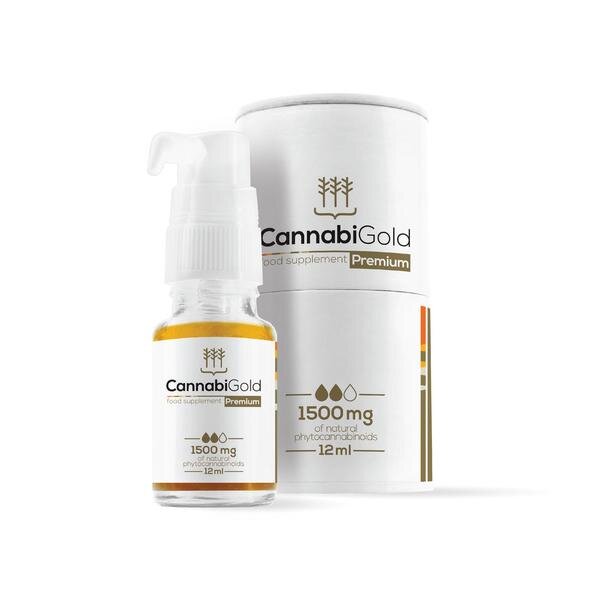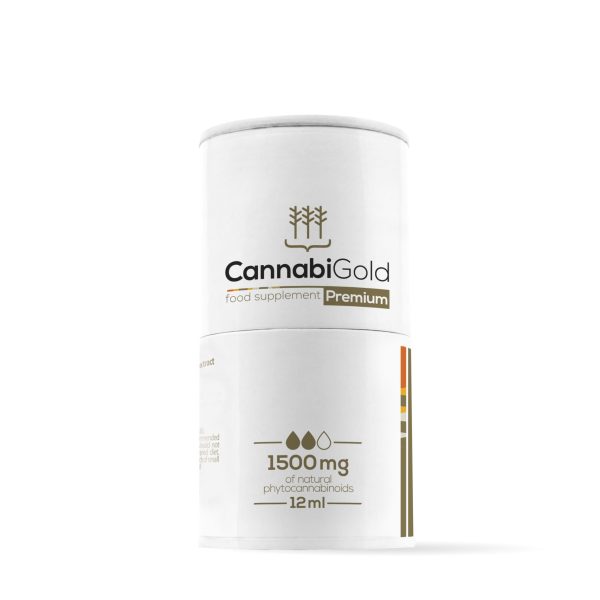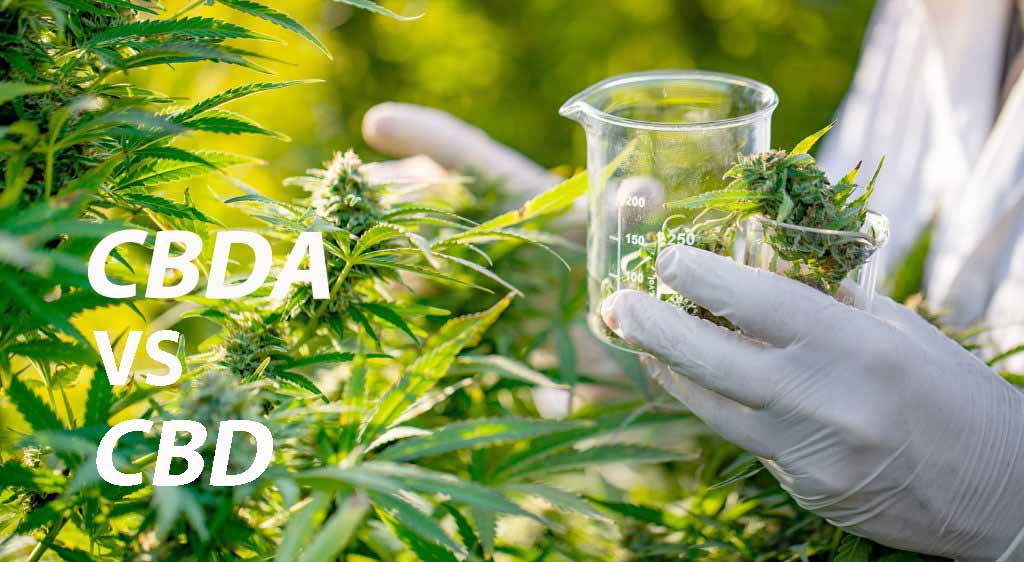Cannabinoids mix in hemp plant
The cannabis plant is a source of at least 100 phytocannabinoids, of which only one is psychoactive – tetrahydrocannabinol (THC). The remaining phytocannabinoids – CBDA (Cannabidolic acid) & CBD (Cannabidiol) are not psychoactive and therefore have therapeutic effects without producing any intoxication.
CBDA didn’t enjoy much scientific interest until quite recently when it was put into the limelight by exciting new research findings.
What is CBDA?
CBDA is a raw compound of fresh cannabis and hemp plant and an acidic precursor of CBD.
CBDA comes directly from CBGA (Cannabigerolic Acid), which is the ‘mother’ of all cannabinoids produced in the plant’s trichomes. CBGA, in turn, produces the three major cannabinoid lines:
- THCA (tetrahydrocannabinolic acid)
- CBDA (cannabidiolic acid)
- CBCA (cannabichromenic acid)
These cannabinoids then break down even further into THC, CBD and CBC. THC is psychoactive and illegal in many parts of the world, but CBD, CBC and CBG are legal and commonly used. CBDA and CBD are both non-intoxicating. Neither one will cause a ‘high’ effect, which means they are both safe and will not alter one’s perception or control when working or driving.
CBDA is the raw organic parent of CBD
CBDA becomes CBD simply through the process of heating, curing or drying. It has a chemical chain called ‘carboxyl’ attached to the molecule. When the cannabis is left to cure, the carboxyl chain will slowly break down (the ‘carboxylation process’). When this happens CBDA and other acidic cannabinoids lose their acidity.
CBDA inhibits inflammation and infection without the side effects of NSAIDs (‘Non-Steroidal-Anti-Inflamatory-Drugs’)
Although the CBDA and CBD have similar health effects and are related, they work in the body in completely different ways.

Prostaglandin hormones are made at the sites of tissue damage or infection, where they can cause pain, inflammation and fever as part of the healing process. CBDA was found to ease these symptoms.
Most cannabinoids such as CBD bind with CB1 or CB2 receptors but CBDA interacts with the body by inhibiting the COX-2 Enzyme (cyclooxygenase-2). Blocking this enzyme impedes the production of prostaglandin hormones causing pain, swelling, inflammation and other painful conditions. So CBDA can ease these symptoms like other NSAIDs, e.g., aspirin or ibuprofen but without the associated risks of cardiovascular disease or kidney damage. (Research data from clinical trials revealed that COX-2 inhibitors caused a significant increase in heart attacks and strokes – some drugs in this category incurring more risks than others).
CBDA enhances happy hormone production in the brain
CBDA also stimulates 5-HT receptors, which is an amino acid that your body naturally produces and converts into other substances like serotonin and melatonin. Melatonin promotes healthy sleep patterns and serotonin production is essential to overall health and well-being. Low serotonin levels have been linked to anxiety, irritation and depression.
CBDA is 100 times more potent than CBD in preventing nausea
A 2013 study also found that CBDA prevents vomiting in Suncus murinus and nausea-induced behaviour in rats by enhancing 5-HT1A receptor activation. The potential of CBDA to reduce nausea and vomiting in the models was evaluated to be about 100 times more potent than CBD itself.
CBDA stopped breast cancer cells from migrating in-vitro
Results of the research revealed that CBDA inhibits migration of the highly invasive MDA-MB-231 human breast cancer cells. The study was done using petri dishes and has yet to be further confirmed by clinical human trials. However, these findings are very promising for the future of highly invasive form of breast cancer treatment.Another promising factor is that CBDA also inhibits the enzyme COX-2 which can amplify breast cancer migration.
CBDA is a faster acting agent than CBD
While many of the benefits of CBD and CBDA are the same, the latest research has demonstrated CBDA’s own unique benefits which are different to those of CBD. A recent Italian pilot research study has demonstrated that CBDA has greater bioavailability than CBD. This means that the body can process it and metabolize it faster and more efficiently which can be invaluable in treating epilepsy, nausea as well as inflammation.
“CBDA has a rapid effect whereas CBD may be useful in providing a sustained effect.”
CBDA – the new shining star of nutrition
It was also discovered that CBDA was present in non-edible hemp fibre and could provide amazing nutritional benefits, far greater than we currently find in seed based hemp products.

CannabiGold Balance 500 mg, sublingual drops are a perfect blend of full spectrum cannabis oil with equal balance of CBD and CBDA (350 mg CBD + 1500 mg of CBDA), as well as other cannabinoids, terpenes and flavonoids to achieve the most effective entourage effect.
How to get the positive effects of CBDA?
The easiest way is to blend fresh hemp leaves into a smoothie or juice them. They can also be added to a salad like any other herbs.
However in most places where only industrial hemp is legal, including EU countries and many parts of the US, the best way to experience the potential benefits of CBDA is by taking an organic, lab-tested, full-spectrum CBD oil sublingually. This way one can ensure that it does in fact contain some form of CBDA (confirmed by product lab tests). Usually CBDA oil tastes much more acidic than CBD oil, which can be a good indication of its acidity content.
It’s important to remember that the process of heating or cooking with CBD oil will make the carboxylation reaction occur and therefore lose any CBDA that it contains.
CBDA’s future
The potential of CBDA anti-inflammatory activity continues to be the main focus of intensive research as the initial results look extremely promising. In the future it may prove to become a medicine that can substitute many current anti-inflammatory, anti-depressant and anti-cancer drugs but with no harmful side effects. It can also turn out to be a new rich nutrition source for the food industry.
